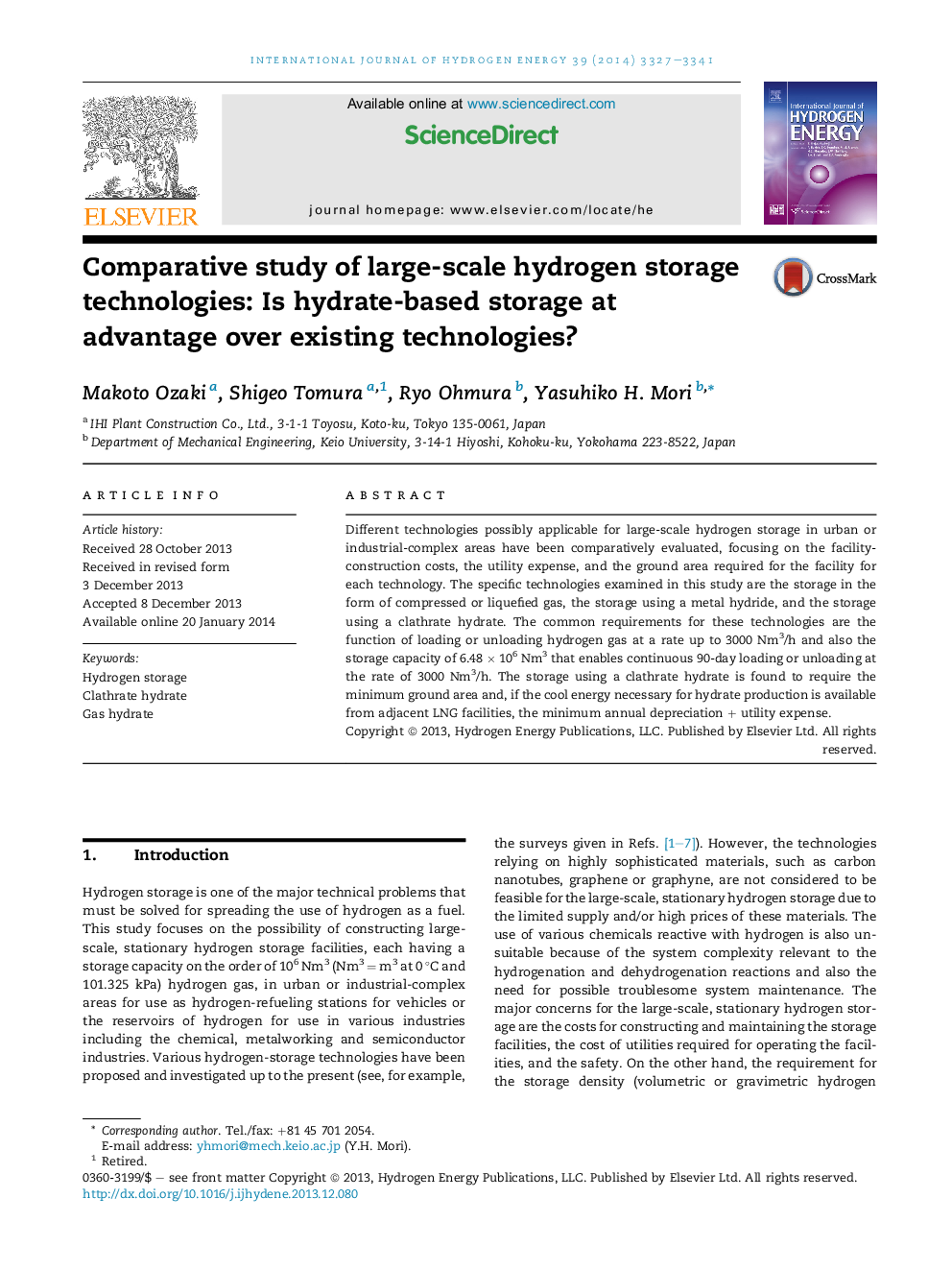| Article ID | Journal | Published Year | Pages | File Type |
|---|---|---|---|---|
| 1270637 | International Journal of Hydrogen Energy | 2014 | 15 Pages |
•Five technologies applicable for stationary large-scale H2 storage are compared.•The storage-system construction costs and the utility consumption are evaluated.•The ground area required for each storage system is also estimated.•Hydrate storage is the most economical if LNG-originated cool energy is available.•Hydrate storage requires the minimum ground area.
Different technologies possibly applicable for large-scale hydrogen storage in urban or industrial-complex areas have been comparatively evaluated, focusing on the facility-construction costs, the utility expense, and the ground area required for the facility for each technology. The specific technologies examined in this study are the storage in the form of compressed or liquefied gas, the storage using a metal hydride, and the storage using a clathrate hydrate. The common requirements for these technologies are the function of loading or unloading hydrogen gas at a rate up to 3000 Nm3/h and also the storage capacity of 6.48 × 106 Nm3 that enables continuous 90-day loading or unloading at the rate of 3000 Nm3/h. The storage using a clathrate hydrate is found to require the minimum ground area and, if the cool energy necessary for hydrate production is available from adjacent LNG facilities, the minimum annual depreciation + utility expense.
